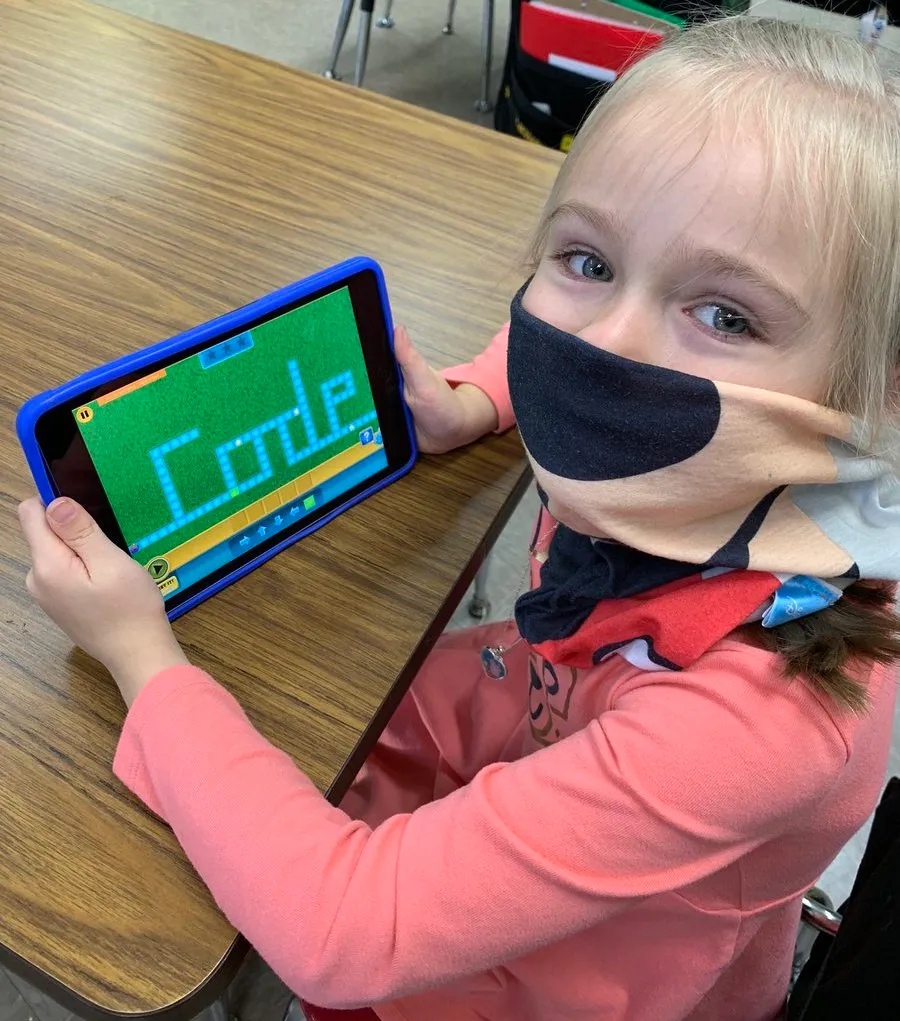Ms. Chase filled out her coding plans with new robots purchased using grant funding and with printable worksheets from Teachers Pay Teachers. Students used paper pieces to lay out the code before applying it to their robots. It gave her a clear way to talk about the process and show how students' choices related to the robots moves.
“At first, [the students] were thinking [Kodable] was just a game, so they were getting through levels as fast as they possibly could.” However, Ms. Chase explains that once levels started getting harder, students had to start thinking about whether or not a move was the best choice or if it would work.
She states there were moments of frustration when students expected specific solutions to work that then didn't. When this happened, she taught her students to try other solutions and think through the problem in ways they might not have tried the first time.
Those moments of frustration and problem solving also lead to students asking a classmate who had already been through the activity for help, allowing Ms. Chase to incorporate collaboration skills into her students' learning. She says collaboration is an ongoing conversation in her classroom. With students wanting to share their progress and solutions out of excitement, it was the opportune time for Ms. Chase to discuss how to collaborate and problem-solve with each other.
As her first year teaching coding, she knows she might not always know the answer, but that's nothing to be afraid of. “I've been teaching for a very long time, and this is very new to me... I jumped feet first in. I thought, 'you know what, the kids are never afraid.' To get started, I showed them the first couple of easy [levels], and I knew they would be able to take off better on their own than with me trying to show... They learn so much more by discovering on their own and with help from their peers,” says Ms. Chase.
She teaches her students to use wording like “what do you think would work here?” or “what can you do?” when they help classmates. She talks about teaching students to ask questions to help other students get to the answer rather than showing them. This way, students can learn and be rewarded with finding the solution on their own.







